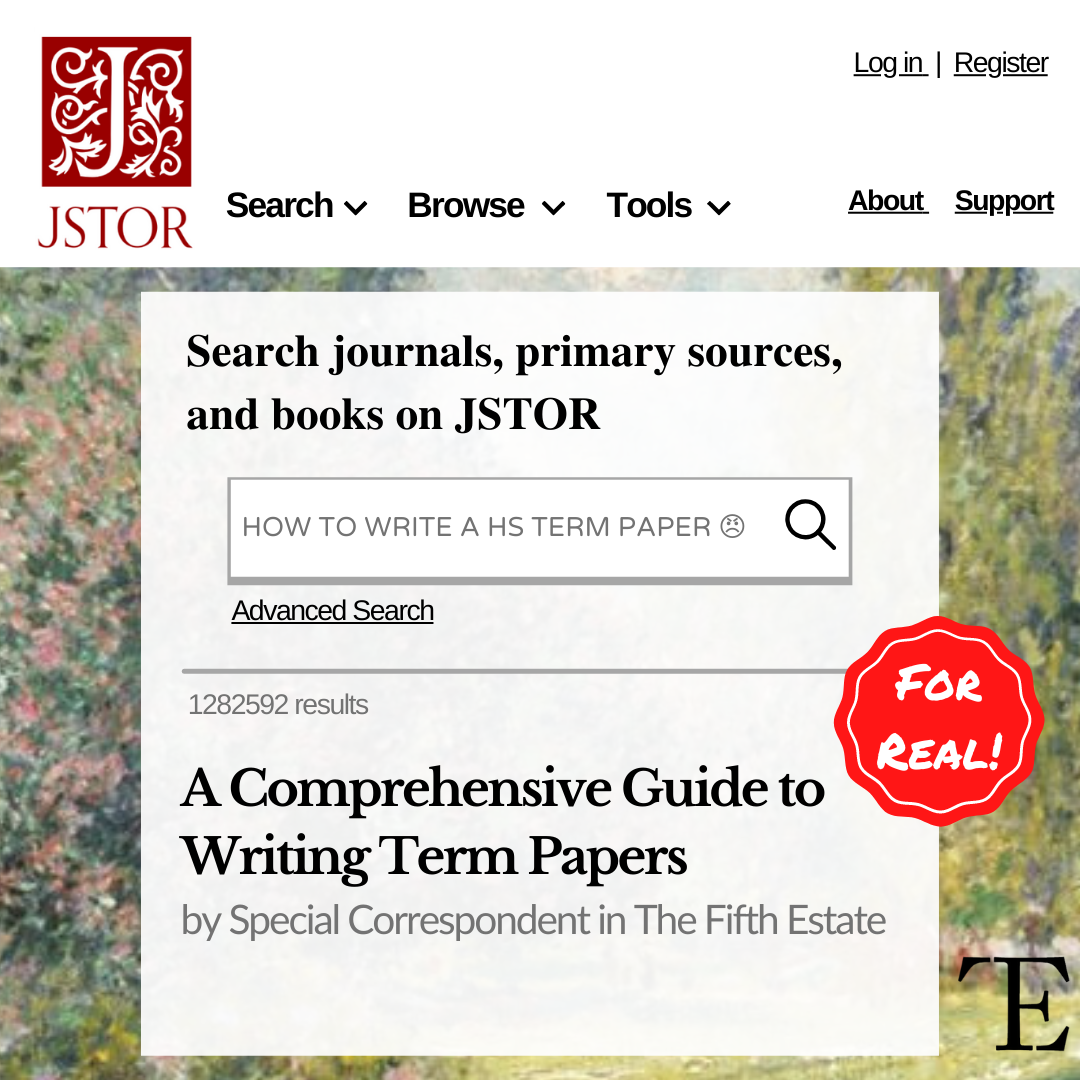Edited by Neha Cherian
Design by Aryamaan Singh
This article is meant to be of assistance to that segment of the Insti population that feels completely clueless when it comes to writing, managing and approaching HS term papers. There is no magic formula to churn out perfect S-grade essays with minimum effort. Nevertheless, some of the tips included here will go a long way in helping you articulate whatever argument you seek to flesh out in your paper.
#1: Pay Attention to exactly what the Professor wants: This may seem obvious, but you must be very sure of what the Professor is looking for – everything from content requirements and citation formats to line spacing and even the name/type of file you’re going to end up submitting. You must know what the Professor wants in the paper itself. Do they want a descriptive account of something, along with a critique? Is there a set question? Have you been asked to persuade or advance an opinion or defend an argument? A safe way to approach term papers is to understand what the instructor wants and do exactly that.
#2: Deciding what your angle is:
Scenario 1- Choosing your own topic
Let’s be honest, sometimes it is infinitely preferable not to flex that free will muscle. When you are given free reign over your choice of topic, keep a few things in mind:
i. Make sure it is relevant to the course. In fact, it is advisable to frame it as a succinct, neatly-worded research question. A nice pointy statement of intent makes you sound like you know what you are doing.
ii. Keep in mind the word limit. Nobody expects you to find solutions to all the problems in the Middle East in 1000 words. Choose a topic that you can do justice to within the given constraints.
iii. Find a topic that you find at least remotely interesting – even if it seems as if you have slim pickings – or you will get frustrated very quickly.
iv. When in doubt, mail the Professor- You can run your topic and outline by the Professor if you have concerns and want early course correction.
Scenario 2- The Professor gives you a topic
When the topic/question is handed to you, or based on readings given to you during the course, things are slightly different. Have some idea of what your angle is going to be – ideally before you do the bulk of your readings. Knowing this beforehand will help you filter and sort information. Going through some articles online and/or watching people’s takes on the topic, coupled with a vague understanding of what the Professor did in class should help you arrive at this preliminary stage. Furthermore, professors often repeat assignment questions- feel free to ask seniors for their essays to understand how they approached the topic.
#3: Writing an introduction and forming an outline: This is where you can masquerade as the intellectual you are not. Here are a few things your introduction can include, subject of course, to word limits:
i. Your topic with context- For instance, if you are writing about economic reforms in China, briefly cover the what, when, why and where in a few lines before diving into your argument.
ii. How important and relevant the topic is (even if it is none of those things). This is appropriate for when you select your own topic.
iii. If it is a long paper and you think that you can’t quite make the word limit, describe the structure of the paper and tell the reader what to expect. Here are a few stock sentence constructions:
- This paper attempts to…/looks at…/investigates…/analyses…
- The first section provides a brief overview of the historical context of…
- This is followed by an appraisal of…
- The concept of ABC is evaluated in the context of…
- XYZ is critically assessed to determine…
Long papers can be daunting. It helps to split the word limit between different sections in digestible chunks such that they look nice and approachable.
#4: Finding Content: Yes, we know you’re drowning in too many assignments to go through all the course material. At least skim through the lectures/materials relevant to your paper. The breadth and depth of your research will of course depend on your commitment:
i. Minimum effort: Wikipedia, newspaper articles, suspiciously free PDFs of journal articles, non-mainstream or sometimes dubious-sounding websites. In other words, whatever pops up first on your Google search.
ii. More effort than the last guy: Google scholar, JStor, EPW, ProQuest, Science Direct (we have institutional access to these), NPTEL transcripts of the course (if it exists).
iii. Willing to go the extra mile: Everything in point ii + knowing your way around the Internet (translation: sci-hub, libgen, z-library).
Pro-tip: If you’re still too lazy for Internet archaeology, snowball cite. Find the papers, books and articles cited in one paper and use those as additional resources. You need not read every page of every article that you find. It is more efficient to read the abstract, introduction and conclusion to determine whether the paper is useful. If it is, you can go ahead and skim through it to find relevant sections.
#5: CITE your sources: To put it bluntly, plagiarism is a crime and no Professor will excuse it if they detect it in your paper. You are not expected to have original ideas about everything. When you borrow an idea, paraphrase it and cite your source. When you wish to quote someone, always put relevant extracts in quotes and cite it. Citations may be found in-line i.e, in the body of the text after the relevant sentence(s), or as footnotes/endnotes. At the end of the paper, all the citations used will be listed alphabetically and in detail as References.
There are three major formats of citation – MLA, APA and Chicago (manuals are available online). The Professor will usually specify which one they want. If they are not particular, you may use whichever one looks easiest, provided you remain consistent.
It is a good practice to cite as you write, because leaving it all for the end can get extremely cumbersome and confusing. You can use citation tools like Zotero to simplify things.
#6: Good writing goes a long way: Readability should be one of your main concerns. Have a clear-cut introduction and a conclusion. The latter should summarise your arguments and/or findings. If you need to kill space, you may also identify the shortcomings in your paper and further questions that it raises. Ensure that your paragraph construction makes it easy to get through the paper, and split your concepts and ideas between paragraphs accordingly. Do not use unnecessarily convoluted language, but also know when to introduce technical terms.
#7 Miscellaneous advice
i. If the Professor gives you a structure, follow it religiously
ii. Do not make unsubstantiated claims. When you advance an argument, provide reasons and/or examples to corroborate it.
iii. Write: Do not wait to waylay the muse. No matter how bad it sounds, start writing. Perfectionism paralysis is the worst kind of writer’s block.
iv. Peer-review: You can run your paper by friends/helpful seniors for feedback. Often, you would have stewed over the paper for so long that you’ll be blind to its errors. Another pair of eyes helps.
Hopefully, this article gives you some ideas and areas to focus on while attempting your next HS paper. No guide can ever be comprehensive, but these pointers should help you develop a base on which to construct your approach to writing these papers. By no means restrict yourself to these points, but rather develop your own unique approach.
Researching and writing for these papers can be incredibly fun and rewarding.
Or not.
Either way, do it in a way that is delightfully and wonderfully you!
(With inputs from obliging HS students)




